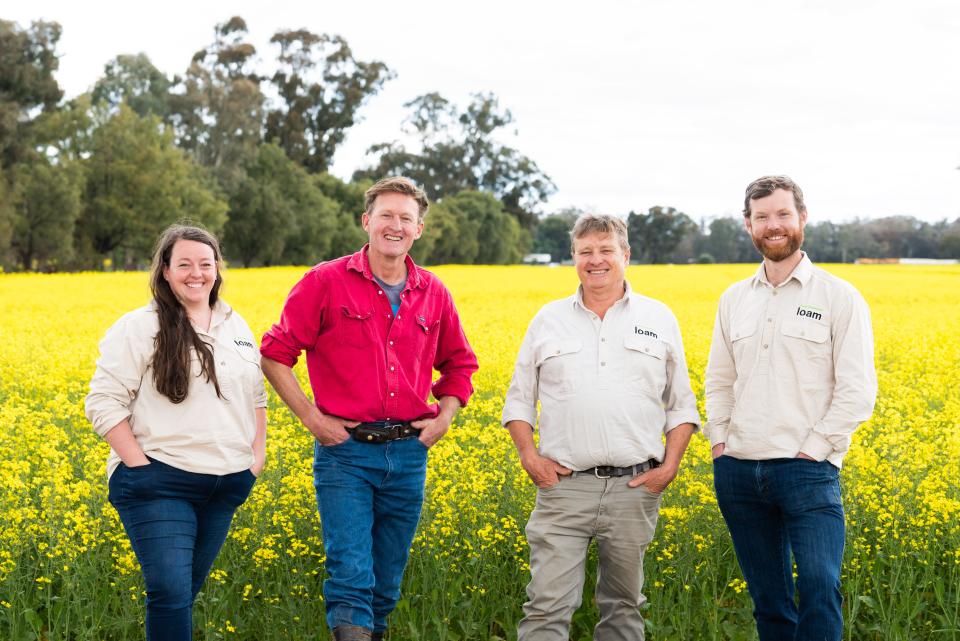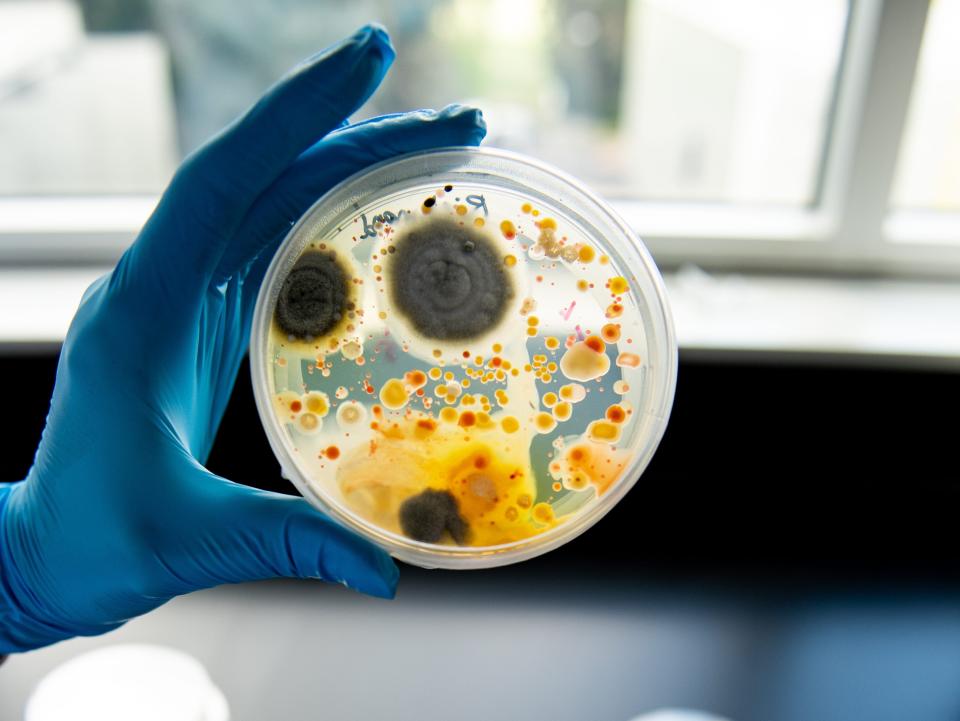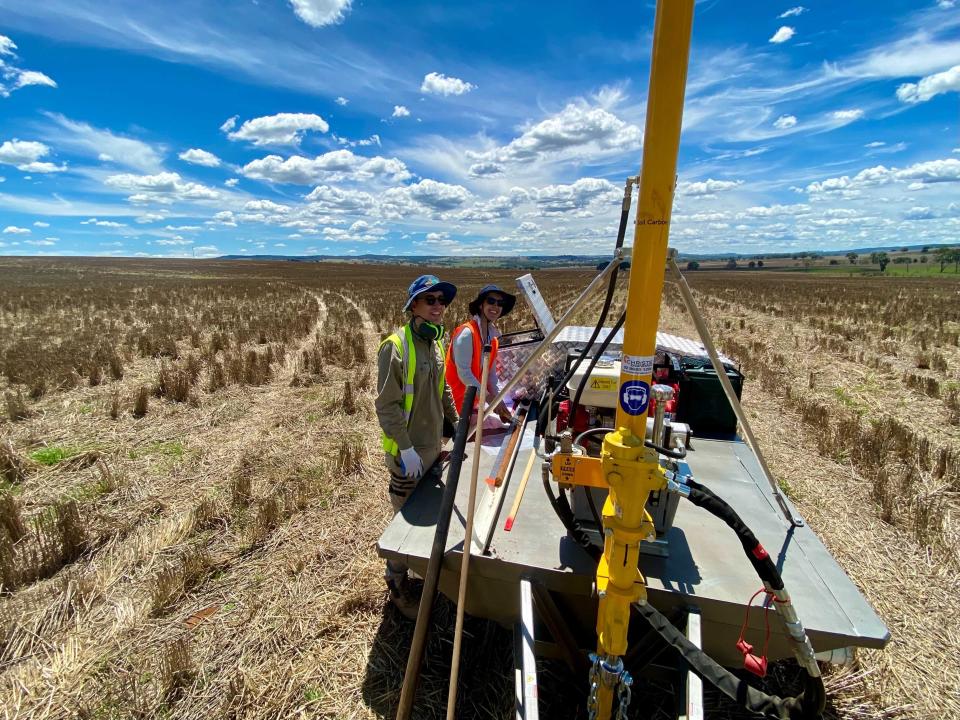

Soil is a huge carbon sink, but intensive agriculture has degraded its ability to store emissions.
The startup Loam Bio wants to use a function to boost soil health and help keep carbon in the ground.
The function could help fight the climate crisis, but scientists have questioned its scalability.
This article is part of “Gains in Green Tech,” a series showing some of the most transformative solutions to the climate crisis. For more climate-action news, visit Insider’s One Planet hubs.
There is too much carbon in the atmosphere and not enough beneath our feet.
Soil forms the basis of food security, holding water and playing host to vast amounts of biodiversity. It also stores an enormous amount of carbon dioxide — a crucial element of healthy soil that helps hold the nutrients and water needed for plant growth.
But soil carbon is in a sorry state, in part due to current agricultural practices. Soil degradation poses a major risk to food-supply lines, threatening to undermine crop and plant quality.
Loam Bio, a biotech startup, has set out to slow down the rapid advance of climate change while dramatically improving soil health at the same time. The Australian company, founded in 2019, has created a microbial fungus-seed coating to enhance agricultural crops’ ability to store carbon in soil.
“It kind of blows my mind that there’s so much we don’t know about this incredible group of organisms,” Guy Hudson, the CEO and a cofounder of Loam Bio, told Insider.
Hudson’s startup has wowed investors, raising A$155 million, or around $100 million, to date to scale its product from investors including the US heavyweight investor Chris Sacca’s climate-tech fund Lowercarbon Capital. The lure for Lowercarbon Capital was the lack of additional land, energy, equipment, or dramatic behavior changes needed for microbial-carbon removal to thrive.
Loam Bio is part of a bevy of young companies trying to enhance natural processes as a form of carbon removal. Scientists have predicted that, if we are to achieve our goals for climate and economic growth, 10 gigatons of carbon dioxide must be drawn down from the atmosphere annually. Sustainable agriculture and carbon sequestration, including from soil-carbon management, could reduce up to or the equivalent of 4.1 gigatons of carbon dioxide annually.
While getting carbon into the soil is relatively easy, keeping it there is a more complex challenge, according to one expert. Just how commercially scalable seed coatings can be is also a sticking point for scientists.
Hacking a natural process
Typically, plants absorb CO2 and convert it into sugars through photosynthesis. The plants then exude some of this through the roots and into the soil.
There are different types of soil carbon; some decompose easily while others can take thousands of years to break down. When a soil microbiome, which is a medley of bacteria, viruses, and fungi, degrades a carbon compound, carbon is released back into the atmosphere.
Some carbon compounds can become fixed to minerals in the soil, which makes them more resistant to soil microbes breaking them down. When this happens, the carbon is stored for hundreds to thousands of years.
Loam Bio treats seeds with a coating so that fungi grow with their roots. The fungus lives symbiotically with the plant and helps it easily convert broken down carbon compounds into more resilient forms. It’s a win-win for farmers and the environment as increased carbon improves soil health, which ultimately benefits local biodiversity and helps crops grow.
The company, which has been working with farmers for three years, launched its first commercial product in Australia this year. It reported an average yield increase of 5.1% for canola and an increase of 2.9% for barley and has research papers at the peer-review stage, which will be released later this year, Hudson said.

Verifying carbon capture in soil
A solution that improves both soil carbon and crop productivity is an attractive one, said Britt Koskella, an associate professor of ecology and evolution at UC Berkeley. She added that they are often tackled separately.
But there are always tradeoffs in nature; even if scientists find “unicorn bacteria” with the desired characteristics, they may come at the expense of the plant’s native microbiome, Koskella said. A functioning, good microbiome — one which helps fight disease — is generally one that is diverse, she adds.
“If we do things that reduce microbiome diversity, tipping it towards a particular function, there’s a worry that decreasing diversity itself has a cost,” Koskella said.
Increased carbon is generally beneficial to soil, but if it locks up other minerals — longer-lasting compounds could become fixed to — then there is a risk of depleting other nutrients that plants need, Andy Bailey, a plant pathologist at the University of Bristol , said. Otherwise, Bailey sees the solution as beneficial.
The soil microbiome could also change to start breaking down the carbon that gets fixed in soil, Bailey added.
“So it might not be a permanent way of capturing things; it’s not been known or studied enough to be able to say with confidence that this will fix carbon for 20 years, 50 years, 100 years,” he said.
“It’s that longevity of fixation which is the bit that’s really needed if you’re talking about this for carbon capture.”
The challenge hasn’t gone unnoticed. “The most important thing is that we’re really accurately measuring the carbon that we store in the soil,” Hudson said. That involves taking an “incredible high density” of soil cores from its fields. In 2022, Loam Bio took around 14,000 soil cores from 86 different field locations and tested a “whole ton” of carbon-measurement technologies.
The company has shown “statistically significant increases” in longer-lasting carbon pools, Hudson added. The startup continues to study its carbon storage capabilities in a variety of soil types.

A reckoning for agriculture
Koskella said that sustainable alternatives to chemical fertilizers, such as microbial treatments, are “not going to have the same widespread efficacy.”
“They are more time-consuming, they’re probably more bespoke, and that can be a real challenge for commercialization,” she said.
Australian cereal growers don’t use many fungicides, Bailey said. In European farming systems, it’s much more common to use fungicides, so a function-based solution could be less effective in certain regions.
Indeed, Loam Bio has products in development in Australia, US, and Brazil that are tailored to each agricultural context, Hudson said.
“These things aren’t a magic bullet in themselves; you’ve got to look at it much more holistically in the whole of your farming system,” Bailey said. That includes looking at the rest of the field, getting crop residue or debris back into the soil, and pivoting to a no-till system, he said.
Still, Koskella said that there is no doubt that seed coatings “have to be part of our future.”
Read the original article on Business Insider